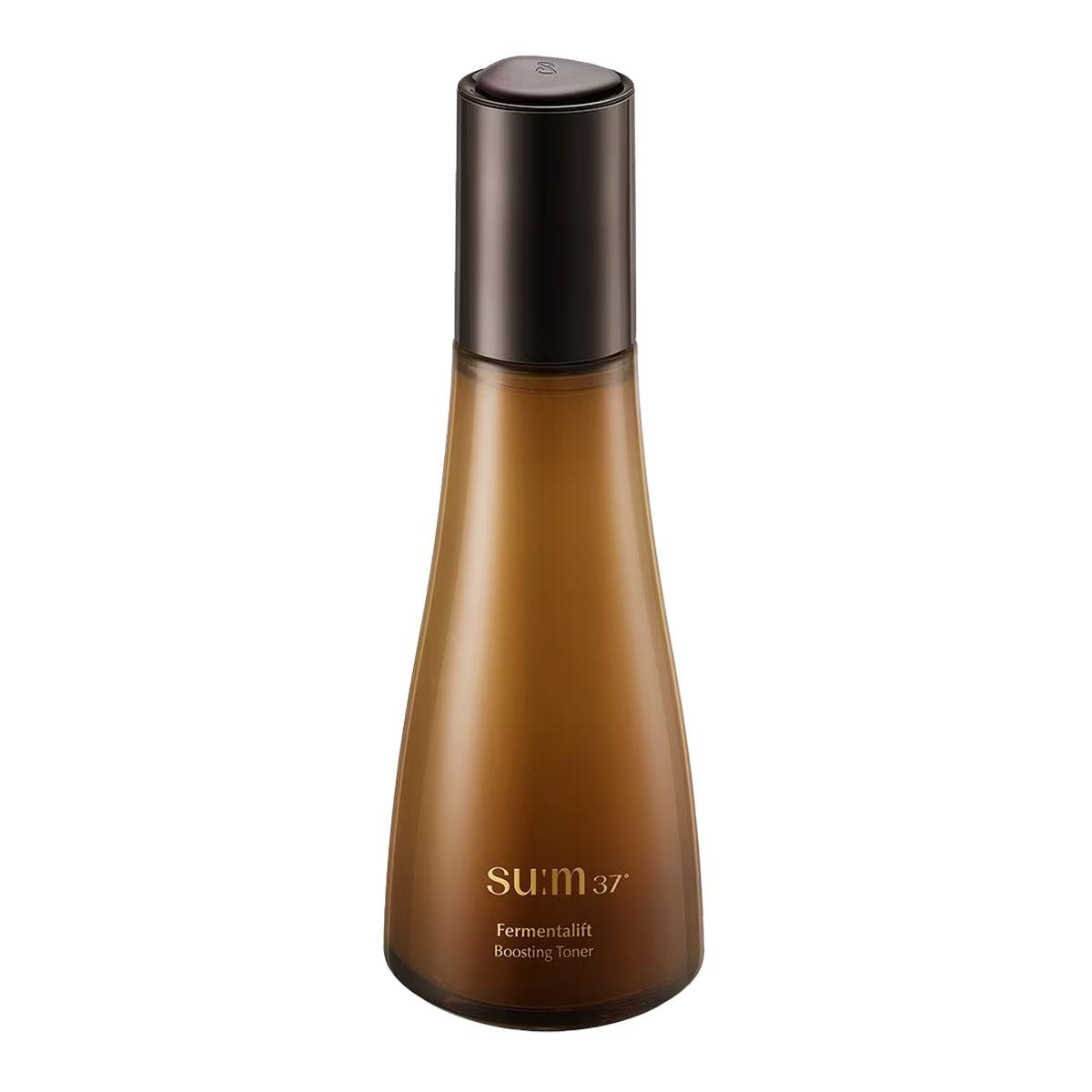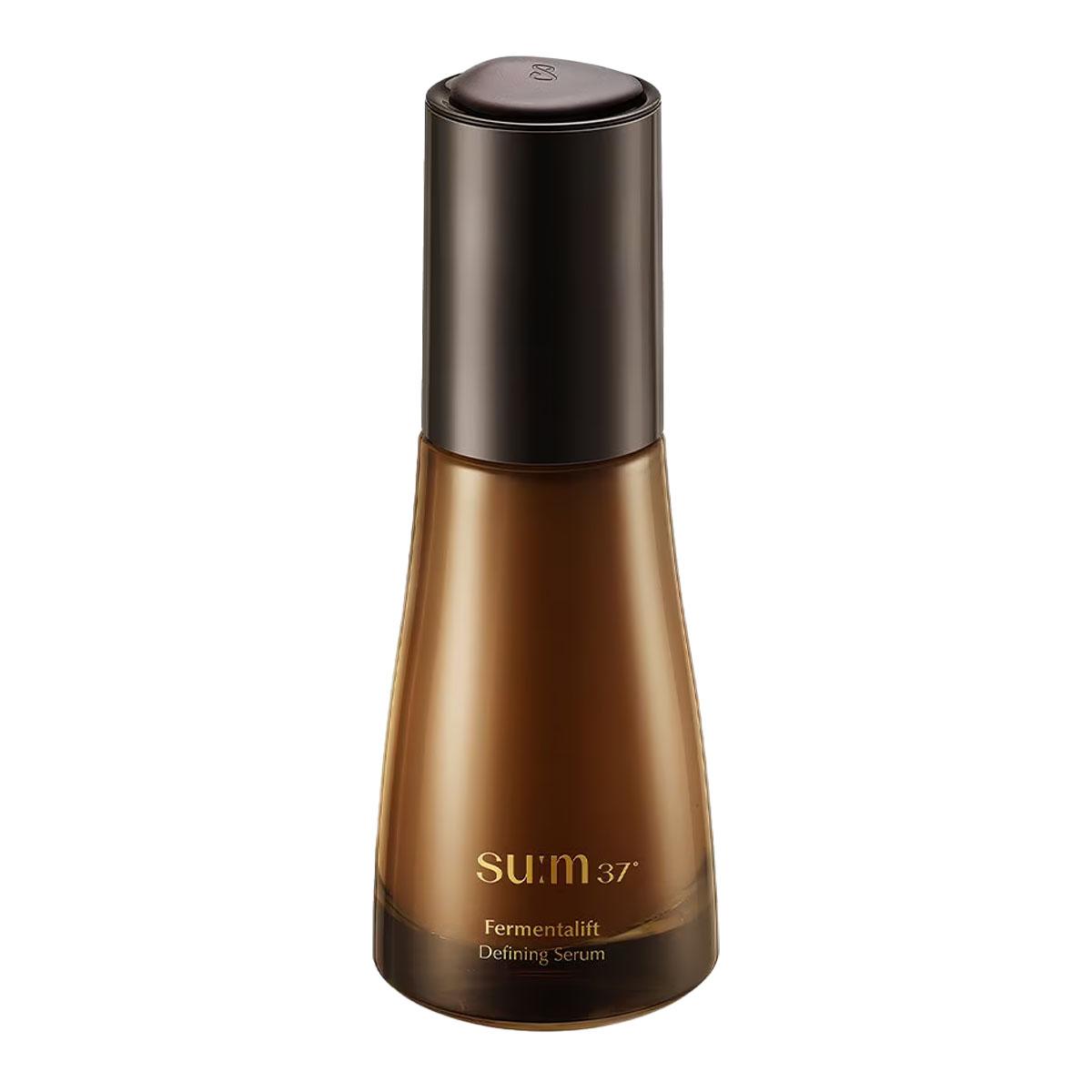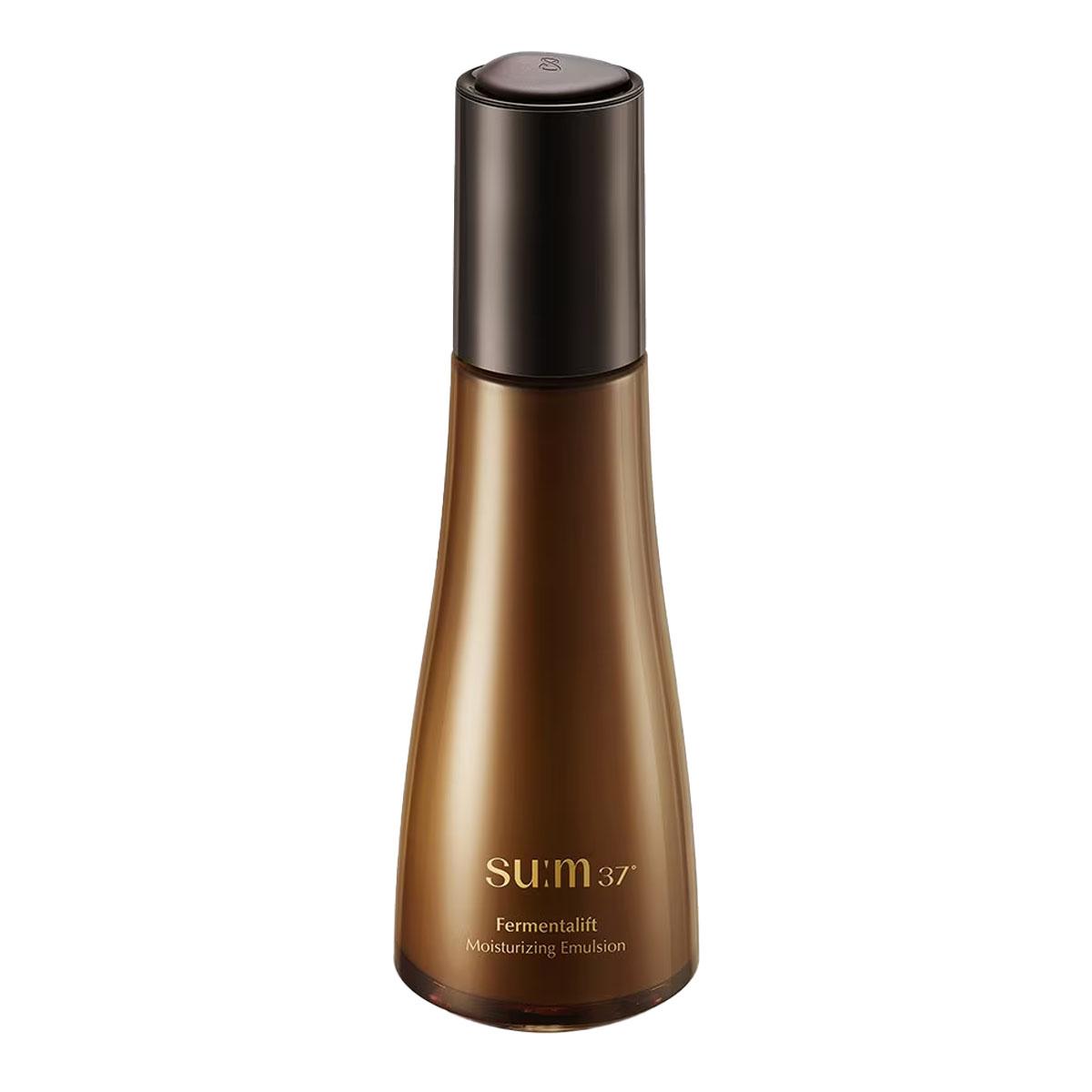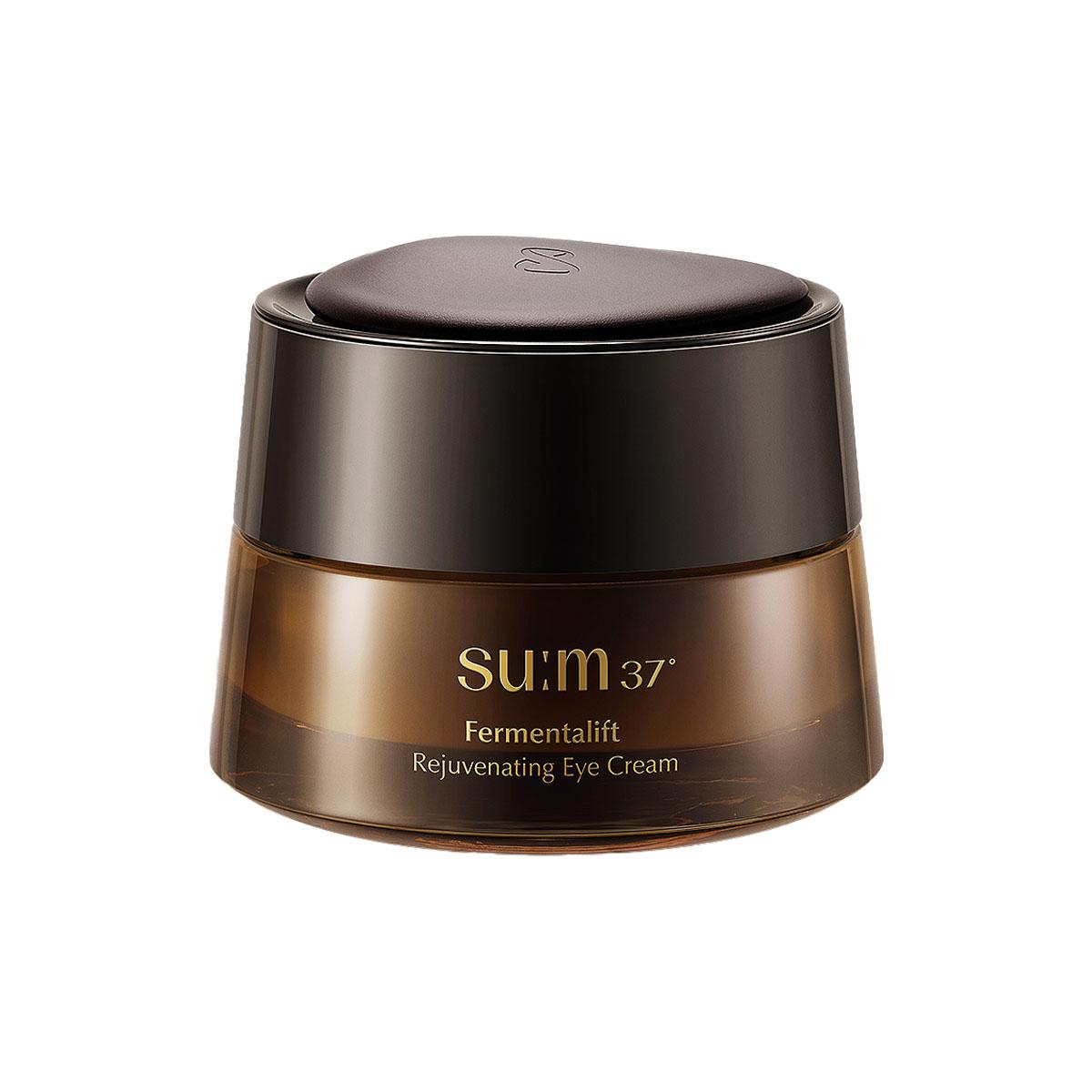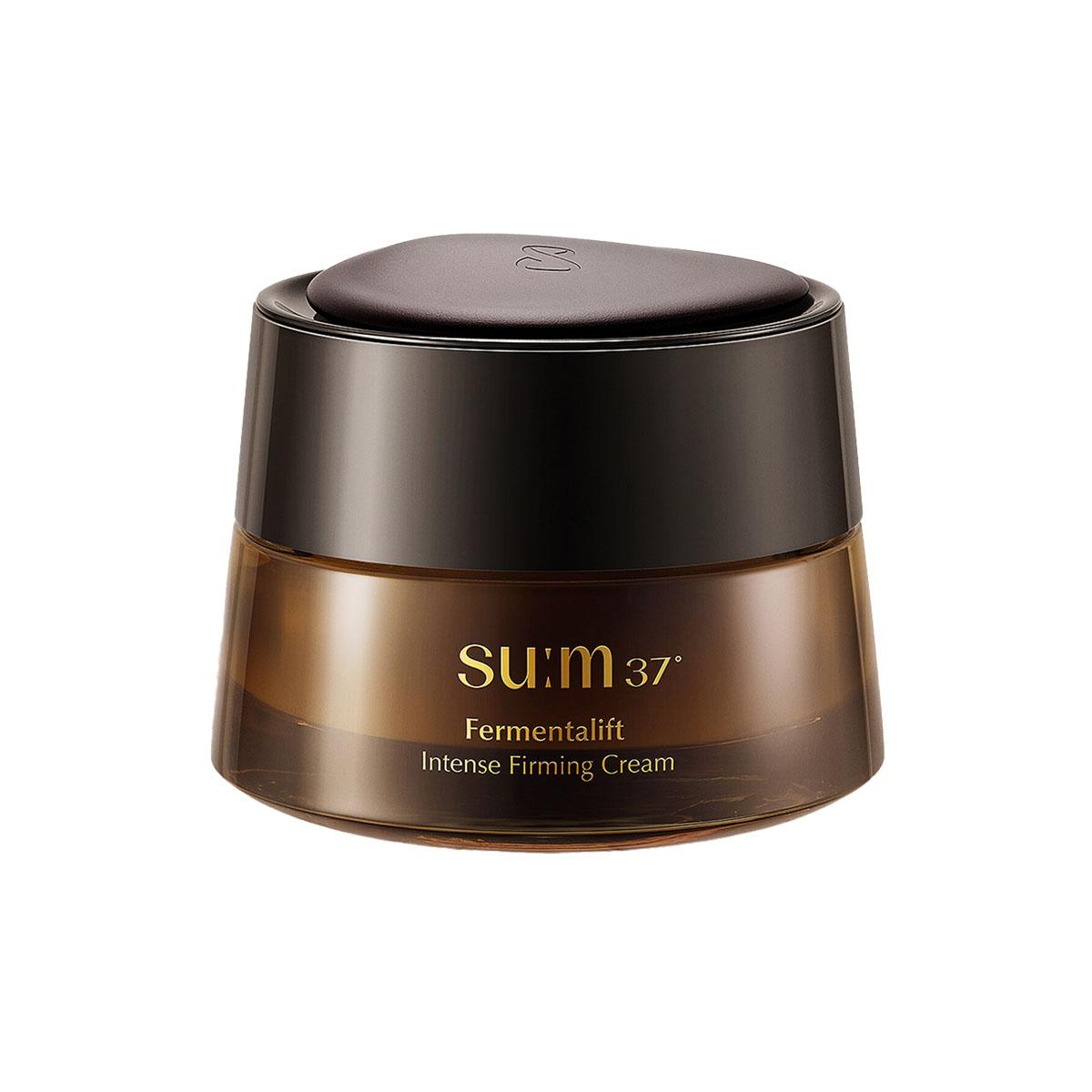Su:m37°
Fermentalift line
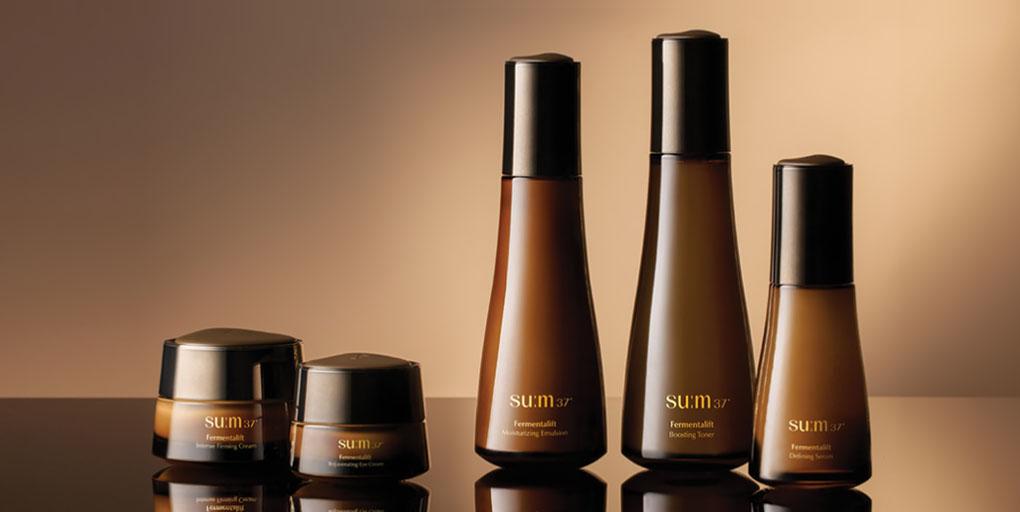
Su:m37°’s “Fermentalift” line (퍼멘타리프트) is an anti-aging skincare line designed to lift, firm and plump the skin, while also smoothing the appearance of wrinkles.
Disclaimer: I personally translated the majority of facts and contents in this article from original Korean sources, so I kindly ask you to credit my work if you’re planning to use any of the information included in this guide.
Recommended for:
Main Ingredients
Su:m37°’s “Fermentalift” line contains Dark Tea V Peptide™, a firming anti-aging ingredient designed to soothe, moisturise, and enhance skin elasticity. The ingredient combines the skin-firming benefits of Triple V Peptide™, and fermented dark tea that has been aged for 60 years.
Dark Tea V Peptide™ appears in ingredient lists as: Water, Glycerin, Saccharomyces/Xylinum/Black Tea Ferment, Butylene Glycol, 1,2-Hexanediol, Carbomer, Sodium Lactate, Polysorbate 20, Caprylyl Glycol, Palmitoyl Tripeptide-1, Palmitoyl Tetrapeptide-7, Acetyl Hexapeptide-8, Gallic Acid.
• 60-year aged Gushu Pu’er tea (fermented dark tea)
Su:m37°’s “Fermentalift” is enriched with 60-year aged fermented Gushu Cha (고수차, 古樹茶)1, also known as Ancient Tree tea, a rare and treasured variety of ripe Pu’er tea.
Originating from the Yunnan province in China, Pu’er tea, or Pu-erh tea (보이차, 普洱茶) is a type of fermented tea obtained through a unique microbial fermentation process, which results in a rich profile of bioactive compounds associated with numerous health benefits2.
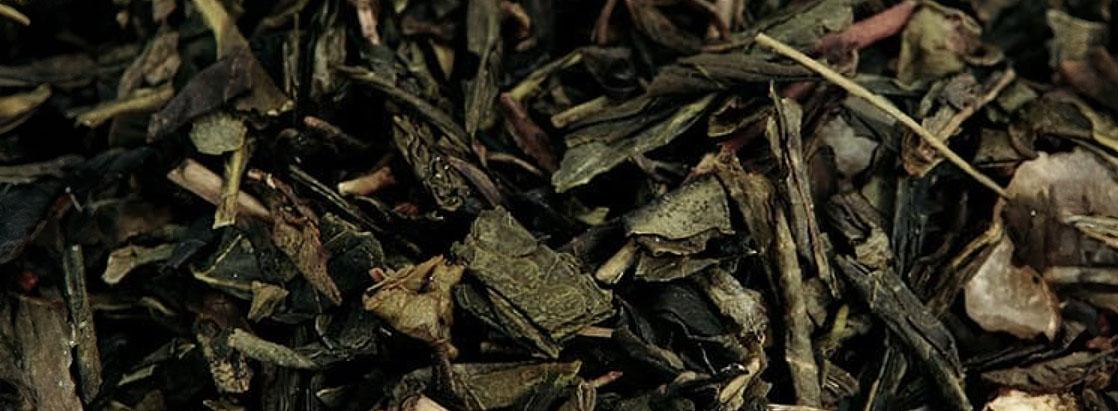
[source: Su:m37°]
tea oxidation vs fermentation:
While the terms “oxidation” and “fermentation” are frequently conflated in discussions surrounding tea processing, it is important to understand that they represent two very different processes. Despite being frequently described as “fermented” or “semi-fermented” teas, most teas commonly available on the market are in fact oxidised or semi-oxidised.
“Oxidation” describes a chemical process where a substance reacts with oxygen from the air, leading to a change in its properties. In the context of tea production, oxidation plays a vital role in determining the flavour, colour, and aroma of the final product.
An important step in tea production is a process known as “rolling”. During this phase, the tea leaves are gently twisted and compressed, rupturing their cell walls and exposing their cellular enzymes to the oxygen in the air to facilitate oxidation.
Tea leaves contain a special enzyme called “polyphenol oxidase“. When a tea leaf is damaged, this enzyme reacts with atmospheric oxygen to convert the polyphenols in the tea into colour and flavour-developing compounds. These compounds end up changing the chemical makeup of the leaves, altering the colour, flavour, texture, chemical content, and strength of the tea.
Oxidation significantly impacts flavour, so knowing when to stop the oxidation process to get the right level of oxidation is one of the most crucial parts of tea processing. Since all tea comes from the same Camellia Sinensis plant, the level of oxidation is what truly differentiates one type of tea from another: white tea is slightly oxidised, oolong tea is oxidised halfway while black tea is fully oxidised.
Once the desired oxidation level is reached, the leaves are heated. Leaves are then removed from the heat and air as much as possible to preserve the oxidation3.

Fermentation, on the other hand, describes a biological process carried out by microorganisms like bacteria or yeast in the absence of oxygen. This absence of oxygen classifies fermentation as an anaerobic process, meaning it occurs even when oxygen is not available within the cell. Under anaerobic (oxygen-free) conditions, these microbes convert organic compounds, generally sugars and starches, into alcohol or acids.
In the context of tea production, fermentation involves the action of microorganisms like bacteria and fungi and it’s commonly induced by humidity and heat. During this process, the microbes break down (“metabolise”) naturally occurring substances already present in the tea leaves, such as polyphenols, proteins, and carbohydrates, leading to biochemical changes that alter the colour, flavour, texture, or other characteristics of the tea4.
The origins of tea fermentation can be traced back to China, specifically during the Eastern Han Dynasty, which spanned from 25 to 220 AD. It was during this period that people discovered that tea leaves left to naturally ferment would develop unique flavours and aromas. This discovery was largely accidental, as historically, tea was transported over long distances by horse or mule, often across rough or difficult paths to reach remote villages nestled in the mountains.
To ensure that the tea could endure this arduous journey, it was pressed into compact cakes, making it easier to carry and store. As these compressed tea cakes made their way through dense forests and humid regions, they were exposed to a variety of environmental influences, including humidity, rainwater, and temperature changes. These factors triggered the activation of microbes naturally present in the tea leaves, resulting in a slow and continuous fermentation process4.
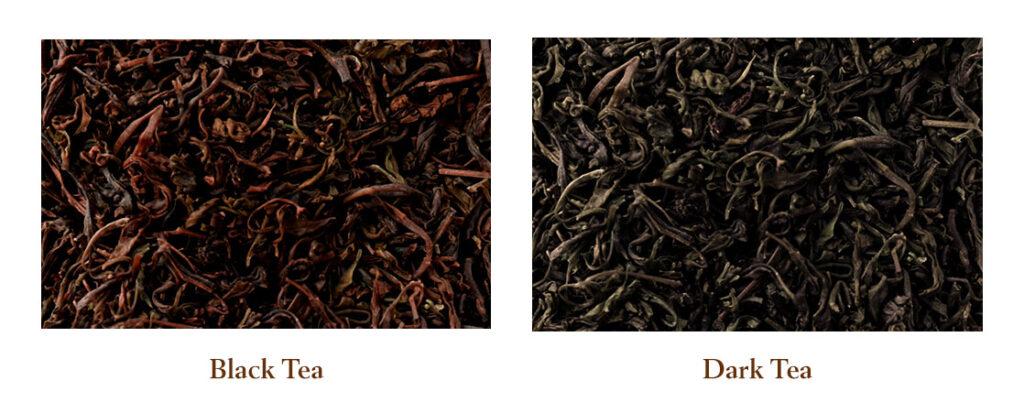
The microbial activity during fermentation causes the tea leaves to darken, turning deep brown or black. This change in colour is what gives fermented teas the name heichá (黑茶) in Chinese, a term that directly translates to “black tea”, although it is commonly referred to as “dark tea” in English to differentiate it from the English-language black tea, which is known as hóngchá (紅茶) or “red tea” in Chinese5.
Fermented teas are often aged for several decades to enhance their flavour and nutritional profile, with their value typically increasing as they mature6. The fermented tea incorporated in Su:m37°’s “Fermentalift” line in this case, was aged for 60 years.
In short, tea oxidation is a chemical process where enzymes in the tea leaves react with oxygen, while fermentation involves microbial activity that breaks down substances in the leaves. In the early days of tea production, the oxidation process was not well understood. Many believed it was caused by the activity of microbial organisms, which led to the widespread use of the term fermentation to describe this reaction.
Pu’er tea – the art of fermentation:
Originating from China’s Yunnan province, Pu’er tea is widely regarded as one of the most famous and traditional examples of fermented dark tea. Pu’er tea, also known as Pu-erh tea (보이차, 普洱茶), takes its name from the city of Pu’er in Yunnan province, where it has been cultivated and produced for centuries6.
As of 2008, the Chinese government has designated the Pu’er-growing areas as a protected designation of origin (PDO), meaning that only tea produced in the Yunnan region can officially be called Pu’er7. This region, bordering Myanmar, Laos, and Vietnam, is known for its rich biodiversity, making it an ideal location for tea cultivation.
Pu’er tea is made from Camellia sinensis var. assamica, also known as Da Ye Zhong (大叶种), a large-leaf variety of the Chinese tea plant that originates from the mountainous regions of southern and western Yunnan. The use of large-leaf tea tree leaves is crucial in the production of Pu’er tea, as they possess distinctive qualities that are exclusive to this variety.
The main components of tea leaves are typically polyphenols, amino acids, and caffeine. A comparison of the biochemical composition of large-leaf and small-leaf teas reveals that large-leaf tea contains a higher concentration of polyphenols, contributing to its bitter and astringent flavour, while small-leaf tea has a greater content of amino acids, which contribute to its refreshing, umami taste8.
There are two styles of Pu’er tea production: a traditional, longer production process known as sheng (raw) Pu’er; and a modern, accelerated production process known as shou (ripe) Pu’er. Both raw and ripe Pu’er twa are created from “maocha” (모차, 毛茶), or unoxidized, green tea leaves.

[Pu’er tea, source: 한뜰]
The production process begins with farmers harvesting the tea leaves and leaving them in the shade to wither. The leaves are then briefly dry-roasted over a high fire to halt most, though not all, of the enzymatic oxidation. This process is known as “sha qing” (살청, 杀青), which literally translates to “killing the green.”
After roasting, the tea leaves are gently bruised through a rolling and rubbing process to remove excessive moisture. Finally, the leaves are dried in the sun, resulting in a semi-processed loose tea called “maocha”.
Raw Pu’er or Sheng Pu’er (생차, 生茶):
Sheng, or raw Pu’er, describes a type of Pu’er tea composed of tea leaves that are sun-dried before being pressed into cakes or bricks. After being roasted and sun-dried, the “maocha” is carefully shaped into cakes or bricks. These forms then undergo a slow, natural fermentation process that can take several years, during which the tea’s flavours gradually develop and mature.
Raw Pu’er requires a minimum of 3 to 5 years of aging for its flavour profile to evolve from astringent to smooth and from bitter to sweet. In this context, aging refers to a complex interplay of oxidation and fermentation, both of which contribute to the gradual transformation of the tea’s characteristics over time.
Like fine wine, raw Pu’er develops richer and more complex flavours over time, often becoming more valuable and expensive with age6.

Ripe Pu’er, or Shu Pu’er (숙차, 熟茶):
Ripe Pu’er tea is essentially raw Pu’er that has undergone a peculiar microbial fermentation process known as “wet piling” or “wo dui” (악퇴, 渥堆). The Kunming Tea Factory first introduced this method in 1972 to speed up the lengthy natural fermentation process traditionally required for raw Pu’er tea to mature6.
This technique consists of creating a meticulously controlled warm and humid environment to foster bacterial and fungal fermentation over time. Much like composting, the process of “wet piling” involves steps like piling, dampening and turning.
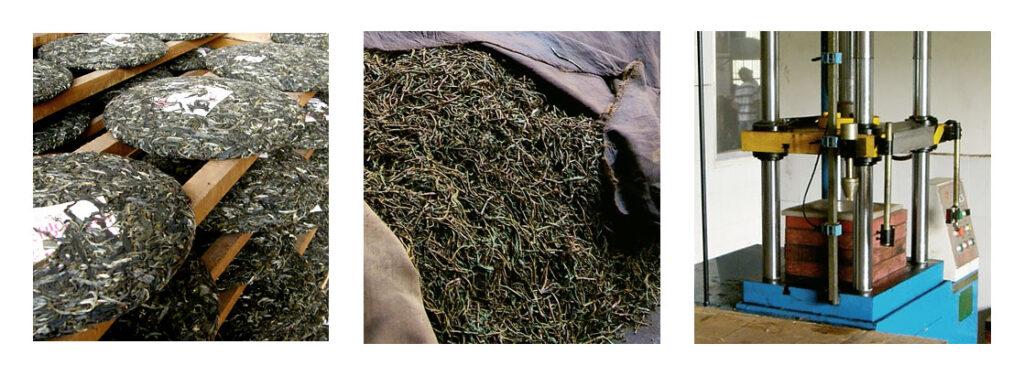
[Wet piling, source: 베버리지뉴스]
Wet piling is a highly skilled technique where, as with any fermentation process, introducing the wrong microbes or fungi can compromise both the quality and safety of the tea. Overall, the process allows ripe Pu’er tea to reach maturity relatively quickly, whereas raw Pu’er requires many years of natural aging to fully mature.
This process also triggers bacterial and enzymatic changes that enhance the tea’s probiotic content and antioxidant levels, significantly improving its health benefits6. The longer the tea has been aged, the greater its probiotic and antioxidant content, the higher its market value. In this case, Su:m37°’s “Fermentalift” line was enriched with ripe Pu’er aged for 60 years to offer exceptional potency.
Ripe Pu’er tea is classified as post-fermented tea, which means the tea leaves go through a microbial fermentation process only after they have been dried and rolled, resulting in the oxidation of the leaves and a subsequent change in colour. The colour of maocha can vary significantly based on the extent of wet piling, transitioning from green to yellow, maroon, or even brownish-black.
In the past, ripened or naturally aged Pu’er have occasionally been mistakenly classified as varieties of black tea due to the deep colour of their leaves. However, while black tea only undergoes primary oxidation during production, both ripened and naturally aged Pu’er experience continuous oxidation and fermentation driven by the activity of microorganisms and free radicals present in the tea.
This sets Pu’er apart as a distinct category of tea.
The value of Gushu Cha:
Su:m37°’s “Fermentalift” line features an exceptional Pu’er tea that is not only prized for its meticulous 60 years of aging but also for its classification as Gushu Cha (고수차, 古樹茶), a rare variety sourced from ancient trees that possesses a notably rich and diverse bioactive profile.
In China, tea trees are generally classified by their age, a factor which significantly influences the quality and characteristics of the tea they produce.
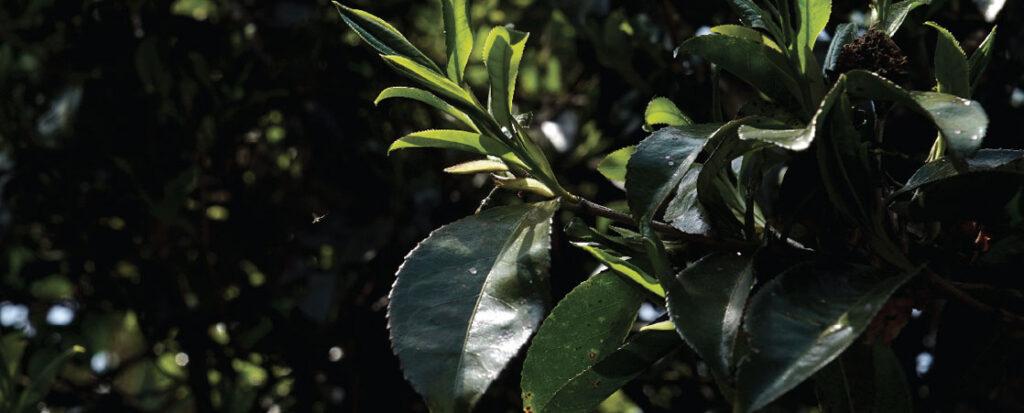
[Gushu tree, source: 모던카라반]
Gushu Cha is highly prized for its rich biochemical profile and complex flavour, which is largely due to the deep root systems of the trees that allow them to absorb more nutrients from the soil. Several factors contribute to the superior quality of Gushu Cha:
Compared to other types of Pu’er tea, Gushu Cha is particularly rich in gallic acid10, a potent antioxidant that fights the effects of free radical damage and visibly improves signs of aging caused by pollution and sun damage. Gallic acid has also been shown to possess anti-inflammatory properties, fade hyperpigmentation, and prevent overactive melanin production, making it an effective ingredient in reducing dark spots and soothing sensitive skin.
• Triple V Peptide™
Besides 60-year aged fermented dark tea, Dark Tea V Peptide™ includes Triple V Peptide™, a blend of three peptides known for their potent anti-aging benefits.
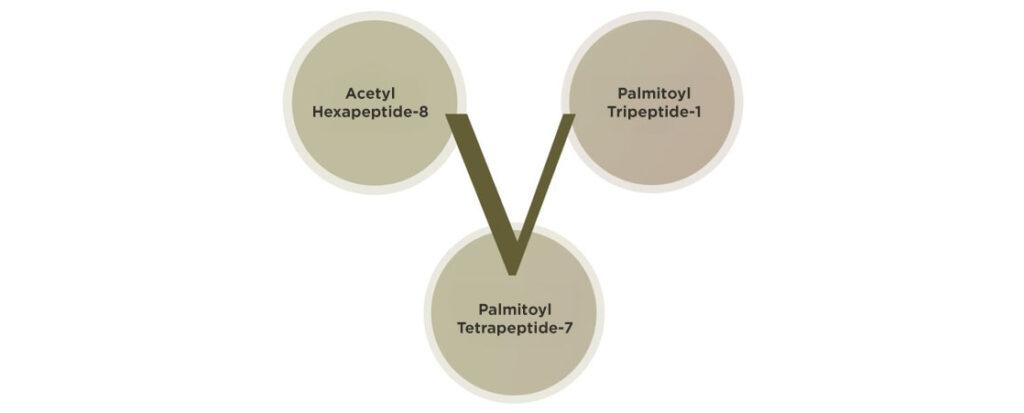
Matrixyl® 3000
Developed by the Sederma corporation, Matrixyl® 3000 combines Palmitoyl Tripeptide-1 and Palmitoyl Tetrapeptide-7, two lipo-peptides that work together to improve skin cell health and encourage the production of extracellular matrix proteins, such as collagen and elastin. These proteins play a key role in maintaining the skin’s structure, keeping it firm, smooth, and resilient.
The two key peptides in Matrixyl® 3000 act as signals for skin cells, encouraging repair and regeneration.
By supporting collagen production, promoting elastin, and helping to slow down cell damage, Matrixyl® 3000 helps reduce the appearance of wrinkles, improves skin elasticity, and supports a more even skin tone.
Matrixyl® 3000 appears in ingredient lists as: Glycerin, Water, Butylene Glycol, Carbomer, Polysorbate 20, Palmitoyl Tripeptide-1, Palmitoyl Tetrapeptide-7.
Argireline®:
Argireline®, also known as Acetyl Hexapeptide-8, is a synthetic peptide developed by the American specialty chemical company Lubrizol. The ingredient is designed to target one of the underlying mechanisms responsible for wrinkle formation by mimicking a portion of the SNAP-25 protein, which plays a key role in the release of neurotransmitters that trigger muscle contractions. By disrupting this process, Argireline® helps to inhibit the signals that cause muscles to contract, which can reduce the appearance of fine lines and wrinkles13.
For this reason, Argireline® is often referred to as “Botox in a jar“. However, it’s important to note that while both target similar wrinkle-causing mechanisms, Argireline® is a topical ingredient, while Botox is injected directly into the muscles for a more immediate and pronounced effect. Therefore, while Argireline® can certainly help in smoothing the skin, it should not be seen as a replacement for injectable treatments.
• Tru-Active™
Tru-Active™ is an potent skincare ingredient that has been developed through an extensive fermentation process spanning over 80,000 hours (approximately 10 years) and incorporating 55 different plant extracts. This extensive process enhances the concentration of 40 skin-beneficial components found within these extracts, including Vitamins B1, B3, and B6, as well as AHAs, amino acids, and minerals.
In particular, the long fermentation process has been shown to increase the concentration of these components by 38 times. For example, a comparative analysis with a similar solution made from the same plant ingredients fermented for just one year, revealed that Tru-Active™ contained 60% more Vitamin B1, 2,300% more malonic acid, as well as 3,872% more itaconic acid.
This rich bioactive profile makes Tru-Active™ a potent solution for nourishing the skin, reducing the appearance of wrinkles, refining skin texture, and promoting a radiant complexion.
Tru-Active™ appears in ingredient lists as: Vinegar, Butylene Glycol.
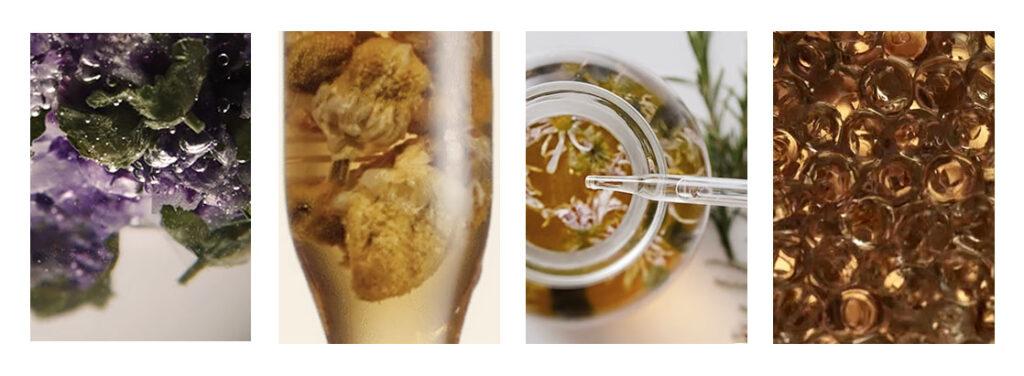
[source: Su:m37°]
• Biopeptide190™
Biopeptide190™ is a polypeptide derived from a particular strain of Saccharomyces cerevisiae (“Brewer’s yeast”) named KCTC14780BP.
Polypeptides are defined as short chains of amino acids that are connected by peptide bonds, usually consisting of 10 to 100 amino acids. The specific sequence of amino acids in a polypeptide determines its unique characteristics, including its ability to fold into various shapes, which, in turn, affects its biological activity.
Both Biopeptide190™ and its source strain are protected by a patent in South Korea (Patent No. 10-2532713) and the strain has been officially deposited at the Korea Collection for Type Cultures (KCTC) under the Korea Research Institute of Bioscience and Biotechnology (KRIBB), with the deposit number KCTC14780BP.
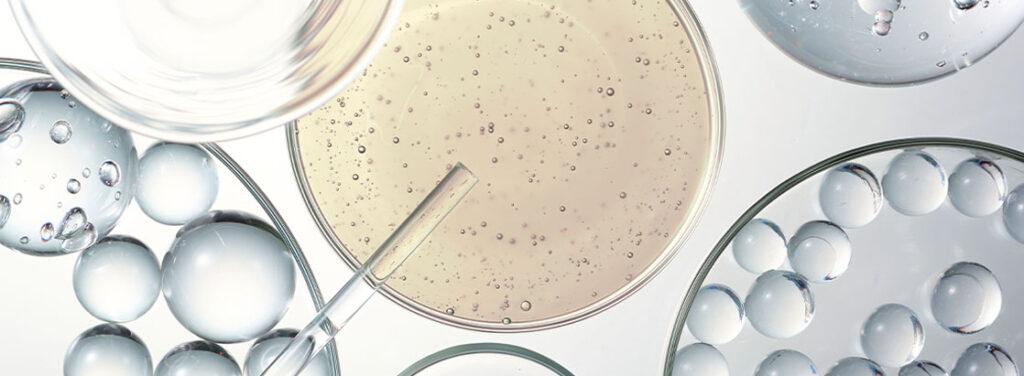
[source: Su:m37°]
identification of the KCTC14780BP strain
Saccharomyces cerevisiae, commonly known as “Brewer’s yeast,” is a species of yeast that has been used for centuries in winemaking, baking, and brewing. Through extensive research involving over 190 different microorganisms, in 2021 LG Household & Health Care identified a particular strain of Saccharomyces cerevisiae that showed great potential for skincare applications due to its exceptional properties.
The strain was first isolated from a plant fermentation broth that had been fermented for a year and then differentiated from other strains of Saccharomyces cerevisiae through genetic sequencing. After analysing approximately 190 different microorganisms, the KCTC14780BP strain was selected because preliminary tests indicated that it promotes cell activation, collagen synthesis, skin rejuvenation and melanin inhibition far more effectively than other yeast strains. Additionally, the strain exhibited potent anti-inflammatory and antioxidant properties, making it a promising ingredient for skincare products designed to promote skin health.
Following its identification, the strain was designated as CF2-0w-22 and officially deposited at the Korea Collection for Type Cultures (KCTC) under the Korea Research Institute of Bioscience and Biotechnology (KRIBB), with the deposit number KCTC14780BP14.
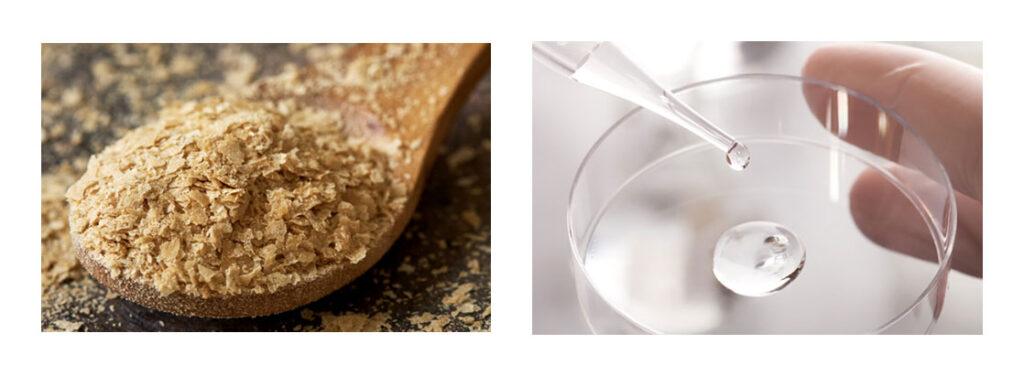
[source: Su:m37°]
development of Biopeptide190™
To enhance the natural benefits of the strain and create a more effective, targeted skincare solution, LG Household & Health Care developed Biopeptide190™, a polypeptide designed to enhance some specific skin-supporting properties of the KCTC14780BP strain.
The purified polypeptide fraction obtained through this meticulous process is Biopeptide190™.
benefits of Biopeptide190™
Biopeptide190™ has been shown to offer even more benefits than the KCTC14780BP strain alone by delivering significantly stronger results in important areas like cell activation and collagen production14.
These superior benefits make Biopeptide190™ an even more targeted and effective anti-aging ingredient compared to the KCTC14780BP strain alone.
Biopeptide190™ appears in ingredient lists as: Water, Butylene Glycol, Saccharomyces Polypeptides.
Products
Click on a product to learn more about its features
• Recommended order of use
Shop the line
• International retailers
• South Korean
Make sure to check out the Discount & Coupons page to access exclusive offers for major Korean skincare retailers.
Notes
1. LG생활건강. (2024, February). 숨37 2월 브랜드 정책. LG생활건강.
2. 주홍걸. (2010). 보이차를 알면 건강이 보인다(차서 11). 한솜미디어.
3. Abudureheman, B., Yu, X., Fang, D., & Zhang, H. (2022). Enzymatic Oxidation of Tea Catechins and Its Mechanism. Molecules, 27(3), 942. https://doi.org/10.3390/molecules27030942
4. Mo, H., Zhu, Y., & Chen, Z. (2008). Microbial fermented tea – a potential source of natural food preservatives. Trends in Food Science & Technology, 19(3), 124-130. https://doi.org/10.1016/j.tifs.2007.10.001
5. Hinsch, B. (2008). The Ultimate Guide to Chinese Tea. White Lotus Press.
6. Xu, F., & Zhang, P. (2009). 普洱溯源. 吉林科学技术出版社.
7. Standardization Administration of China. (2008). 地理标志产品 普洱茶 [Geographical indication product—Pu’er tea] (GB/T 22111-2008). Beijing: Author.
8. Teixeira, A. M., & Sousa, C. (2021). A review on the biological activity of Camellia species. Molecules, 26(8), 2178. https://doi.org/10.3390/molecules26082178
9. Mei Leaf. (2018, August 25). What is Gushu Pu-erh tea? Mei Leaf.
10. Choi, S.-H., Kim, I.-D., Dhungana, S. K., & Kim, D.-G. (2018). Comparison of quality characteristic and antioxidant potential of cultivated Pu-erh and Gushu Pu-erh tea extracts at two temperatures. Journal of Pure and Applied Microbiology, 12(3), 1155–1161. https://doi.org/10.22207/JPAM.12.3.14
11. Croda Beauty. (n.d.). Biopeptide CL Brochure.
12. Croda Beauty. (n.d.). Rigin Brochure.
13. Lubrizol. (n.d.). Argireline Brochure.
14. Jeong, H., Kim, M., Lee, H., & Fukushi, M. (2023). Novel Saccharomyces cerevisiae strain and use thereof. Patent No. 10-2532713. South Korea.
15. Rintala, E., Jouhten, P., Toivari, M., Wiebe, M. G., Maaheimo, H., Penttilä, M., & Ruohonen, L. (2011). Transcriptional responses of Saccharomyces cerevisiae to shift from respiratory and respirofermentative to fully fermentative metabolism. Omics : a journal of integrative biology, 15(7-8), 461–476. https://doi.org/10.1089/omi.2010.0082
Disclaimer: The list above may contain a combination of affiliate and non-affiliate links. If you make a purchase through one of our affiliate links, we will earn a small commission (paid by third party companies, not you). Commissions help fund the content production of the Monodist. For more information on our affiliate policy please refer to the About page. Some links may be missing because the item is not available outside of Korea at the moment.

